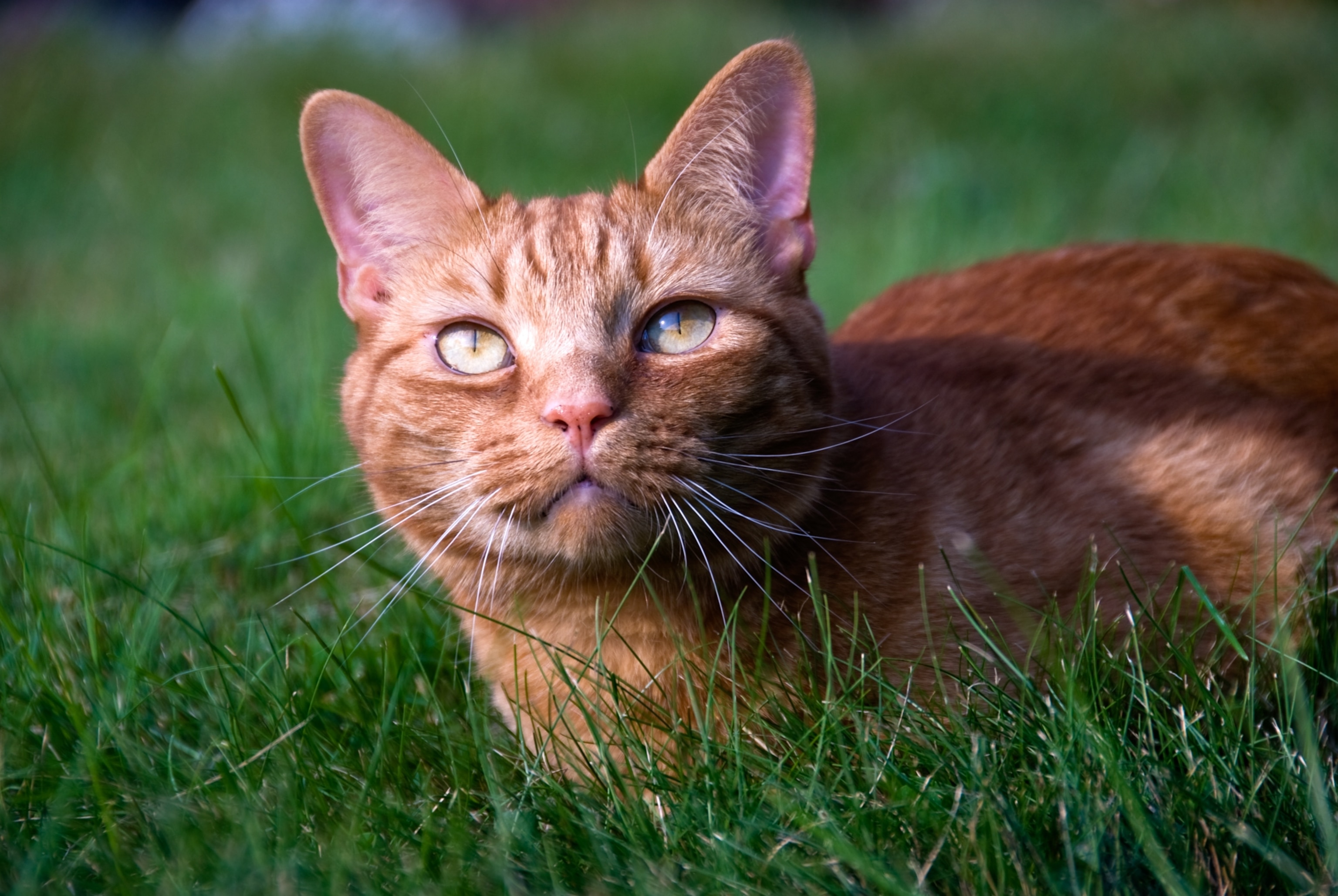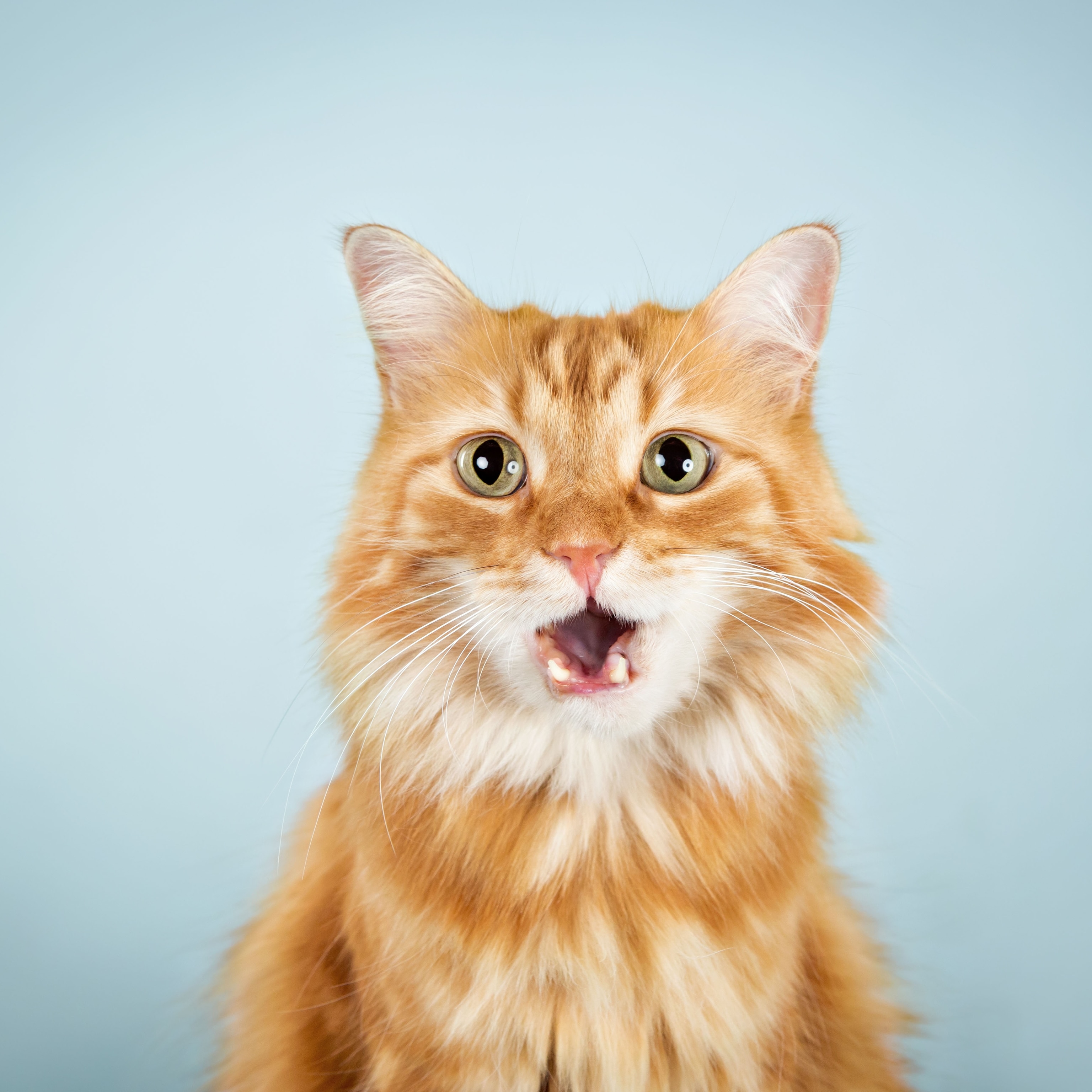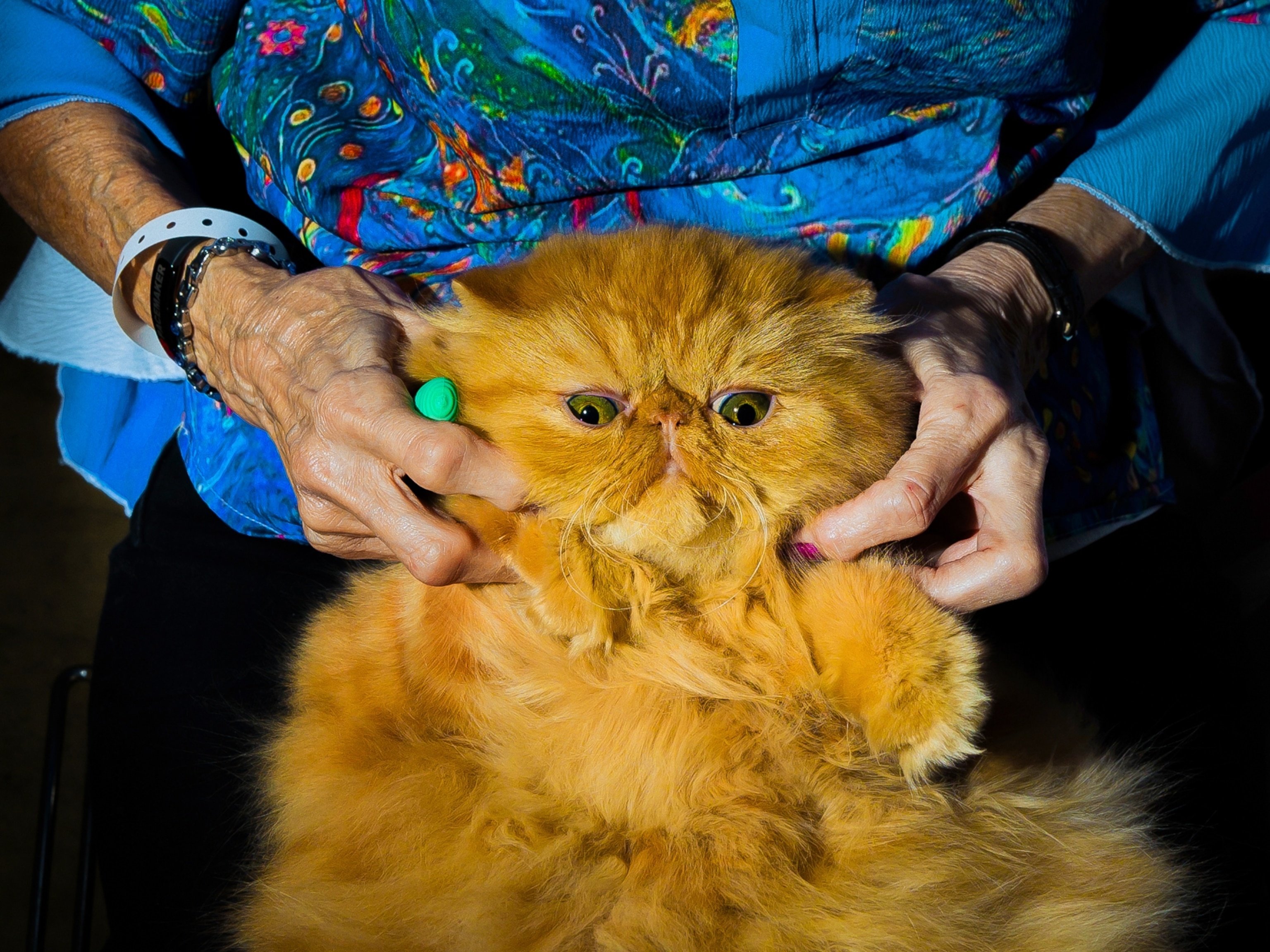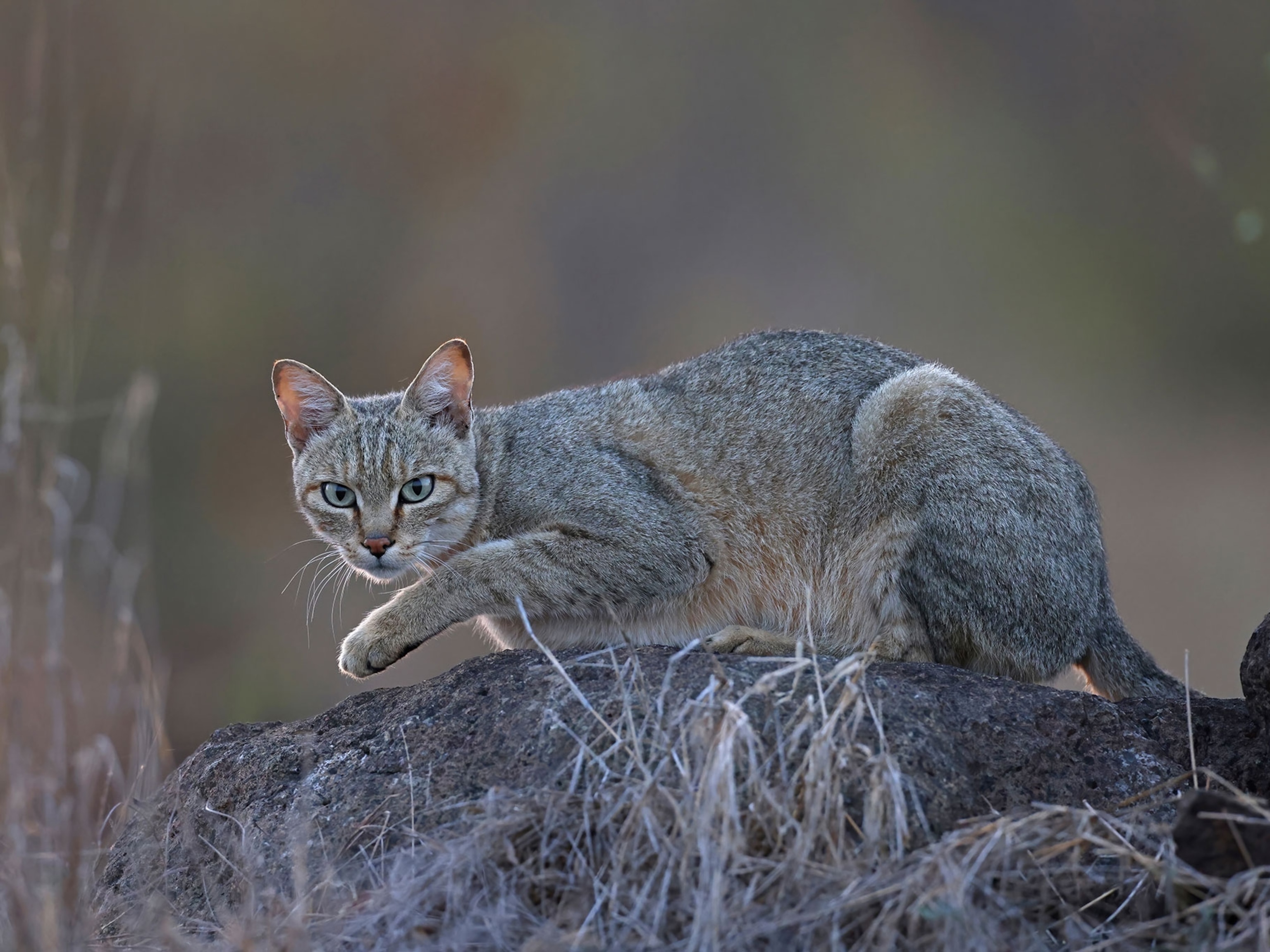Now we know how tabby cats get their stripes
A close look at feline embryos reveals the surprising start to this distinctive pattern on domestic cats.

Of the nearly 60 million pet cats in the United States, one of the most common is the classic tabby—a coat pattern that features stripes, dots, and swirls and what looks like an M imprinted on the cat’s forehead.
As popular as tabbies are (think Garfield the cat), scientists know little about how they get this distinctive appearance.
In a study published this week in Nature Communications, scientists report that the genes that set up the tabby pattern are activated in an embryo’s skin cells before the cat’s fur develops. The early skin cells even mimic tabby stripes under the microscope, a discovery never seen before in embryonic cells.
This unique genetic process may be the same mechanism that creates stripes and spots in wild felines, the authors theorize. The word “tabby” derives from al-‘Attābiyya, a quarter in Baghdad that produced a fine, striped silk taffeta in the 16th century. But the stripes themselves likely originate from the domestic cat’s direct ancestor, the striped Near Eastern wildcat.
“There [is] the satisfaction of understanding something a little bit more about the world,” says study leader Greg Barsh, an investigator at the HudsonAlpha Institute for Biotechnology, a research facility based in Huntsville, Alabama. But the discovery is amazing in another way too, he says: “Biology uses the same sets of tools over and over again, so it's very rare to find something that does not apply more broadly to lots of other situations. This is likely to be the case in this situation as well.”
The genetics behind the colors and patterns of domestic cats have long intrigued scientists. Charles Darwin, for example, proposed that most deaf cats were white with blue eyes. During development, he said, species sometimes acquired inconsequential changes, like hair color, because they were linked to other, more useful changes. (Read how house cats domesticated themselves.)
Some, he added, we cannot even see. He didn’t have modern genetics, but he turned out to be right: It’s an inherited genetic abnormality.
Cat cells of a different stripe
As part of an ethically approved research protocol, Barsh; Christopher Kaelin, a geneticist at Stanford University; and HudsonAlpha senior scientist Kelly McGowan collected nearly a thousand embryos that would otherwise have been discarded from veterinary clinics that spay feral cats, many of which are pregnant when admitted.
When McGowan examined the skin cells of embryos that were 25 to 28 days old under the microscope, she noticed that thicker areas of skin were interspersed with thinner areas, creating a temporary color pattern that resembled the tabby coloring of an adult cat.
She was especially surprised to find such a pattern so early in an embryo’s development, long before the presence of hair follicles and pigment, which are the keys to coloring in animals. (Read more about little-known small wildcats.)
To get a closer look, the team analyzed embryos’ individual skin cells and found two different types, each of which expressed separate sets of genes. Among these, the gene that differed the most was the elaborately named Dickkopf WNT Signaling Pathway Inhibitor 4, or DKK4.
When they looked at how cells expressed DKK4 in embryos of about 20 days old, they discovered that the cells involved were the ones that formed the thick skin pattern a few days later.
Barsh explains that DKK4 is also a messenger protein, called a “secreted molecule,” which signals to other cells around it, essentially saying, “You are special. You are the area where dark hair needs to grow.”

When everything goes as planned, cells with DKK4 eventually become the dark markings that make tabby cats tabbies. But mutations often occur, resulting in other coat colors and patterns, such as white spots or thinner stripes. Alterations can also occur in pigmentation: An all-black coat, for example, results when pigment cells that should have made colors only produce dark pigment. (Learn surprising things you never knew about your cat.)
A spontaneous pattern develops
To find out how these cells actually make a pattern of stripes on a cat’s body, the team turned to Alan Turing, computer scientist and founder of mathematical biology. In 1952, Turing described a way to explain mathematically how patterns can spontaneously emerge in nature.
Known as reaction-diffusion, his theory predicted that systems could self-organize during development in the presence of molecules (or those produced by genes, in the case of cats)—activators and inhibitors—that move from cell to cell, or diffuse, at different rates. If an inhibitor diffused farther or faster than an activator, then mathematically, the system would sort itself out. In the case of tabby cats, the inhibitor is the gene DKK4, but the activator is unknown.
Turing didn’t know what the activator or inhibitor would be. He didn’t even know if they existed. But 70 years later, the tabby discovery is among a number of others that have proven Turing right.
“We tend to think of cells moving around during development, but thinking of them so early in this sort of three-dimensional way, where they’re actually getting these stripes as thickness … That’s really advanced,” says Elaine Ostrander, who studies the genetics behind domestic dogs at the National Institute of Health’s National Human Genome Research Institute, in Bethesda, Maryland.
Ostrander, who wasn’t involved in the study, adds that analyzing the single cells “allowed them to tease apart some of these different processes, all of which are important in ultimately getting the patterns that are in our kids’ storybooks.”
Barsh’s team now sees cat color-pattern production as a two-step process. First, skin cells determine if the tabby patterns will be dark or light. Then, hair follicles grow and make pigments.
By looking into how these processes work in other animals—why some animals get stripes and others don’t—the team hopes to untangle how color patterns evolved over time. They may, Barsh says, even stumble upon discoveries that seem to have nothing to do with coat patterns—like the invisible differences Darwin once imagined.








